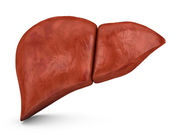Liver biopsy is best for those who would benefit from diagnostic, therapeutic guidance
TUESDAY, July 18, 2017 (HealthDay News) — A practice guidance statement, published online July 17 in Hepatology, has been developed to augment the clinical practice guidelines for the diagnosis and management of non-alcoholic fatty liver disease (NAFLD).
Naga Chalasani, M.D., from the Indiana University School of Medicine in Indianapolis, and colleagues published the guidance document as an update to the 2012 practice guideline for the diagnosis and management of NAFLD. The authors note that few studies report the incidence of NAFLD in Asian countries, and rates are less commonly reported in populations of Western countries.
Based on imaging, the overall global prevalence of NAFLD is estimated at 25.24 percent, with the highest prevalence reported from the Middle East and South America. Systematic screening for NAFLD is recommended for higher-risk individuals with diabetes or obesity. Liver biopsy should be performed in patients who would derive most benefit from diagnostic, therapeutic guidance, and prognostic information. Management of NAFLD should include treating liver disease and associated metabolic comorbidities. Pharmacologic treatments aimed at improving liver disease should be limited to those with biopsy-proven nonalcoholic liver steatohepatitis (NASH) and fibrosis. Lifestyle modification including diet, exercise, and weight loss is recommended for patients with NAFLD, with weight loss key to improving histopathologic features of NASH.
“As clinically appropriate, guidance statements should be tailored for individual patients,” the authors write.
Copyright © 2017 HealthDay. All rights reserved.








